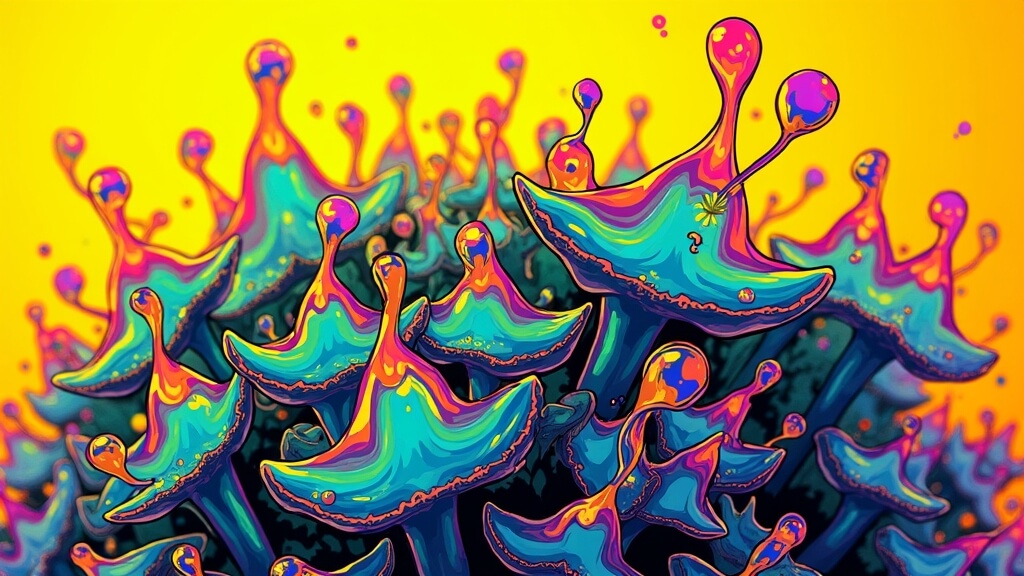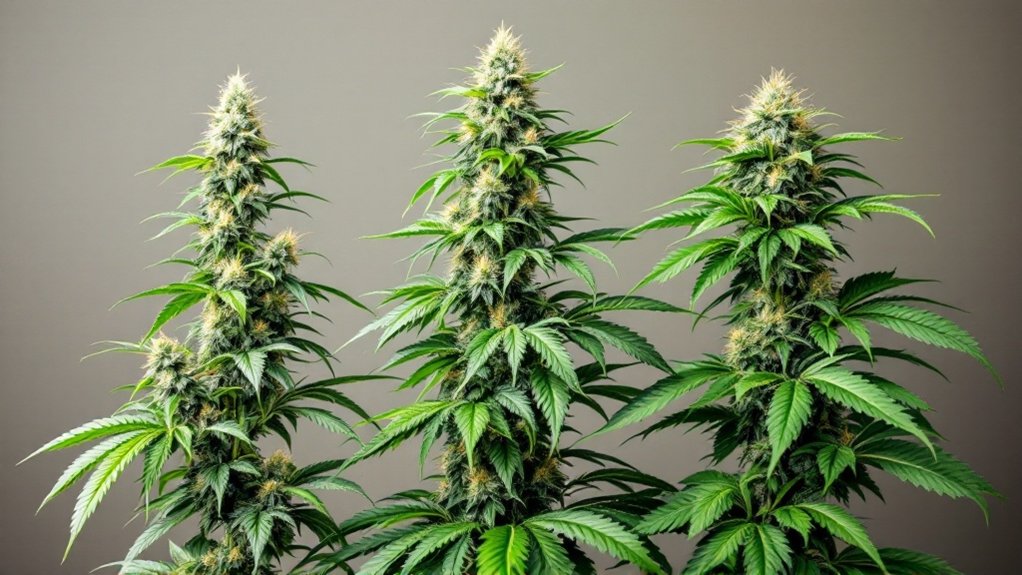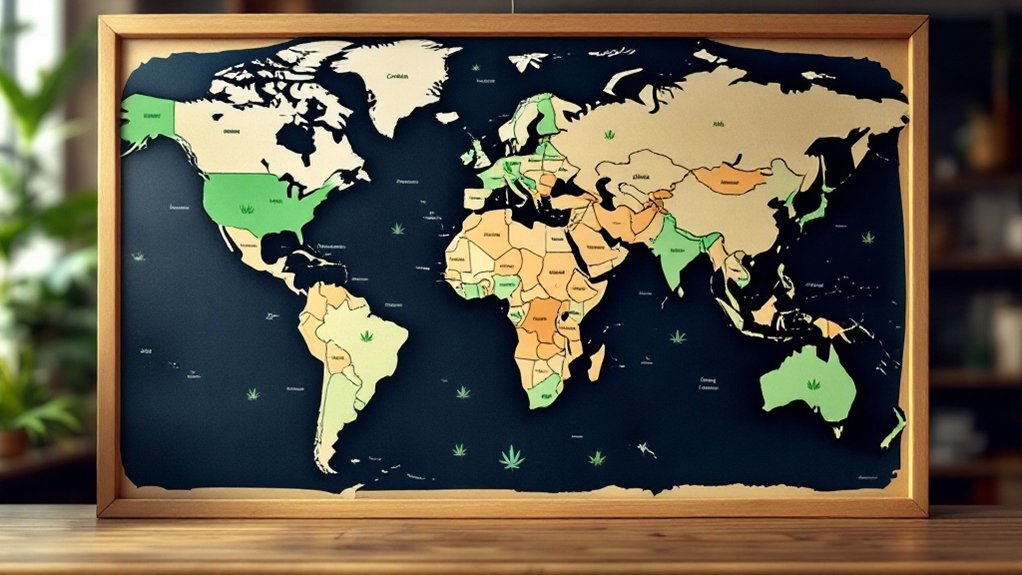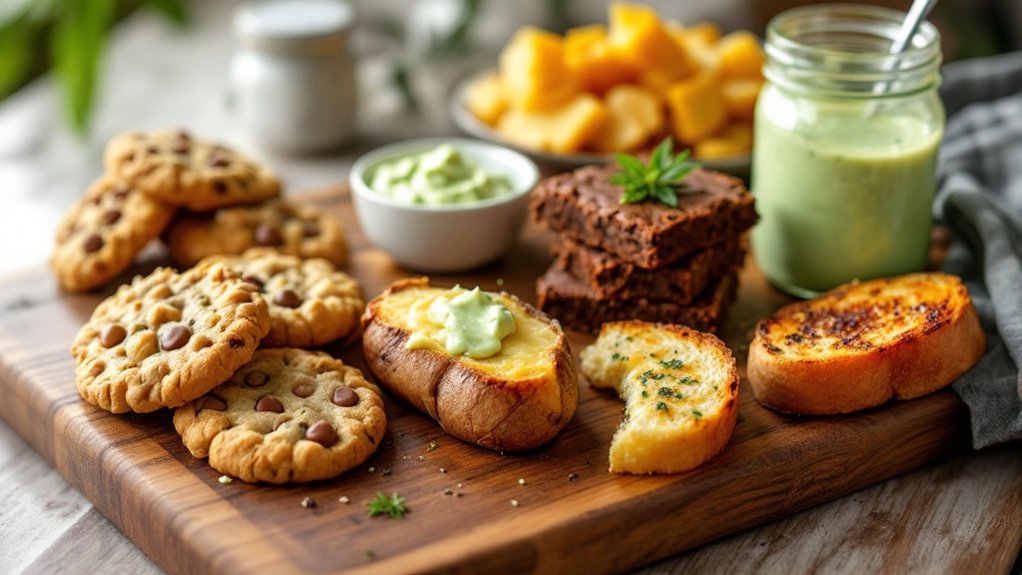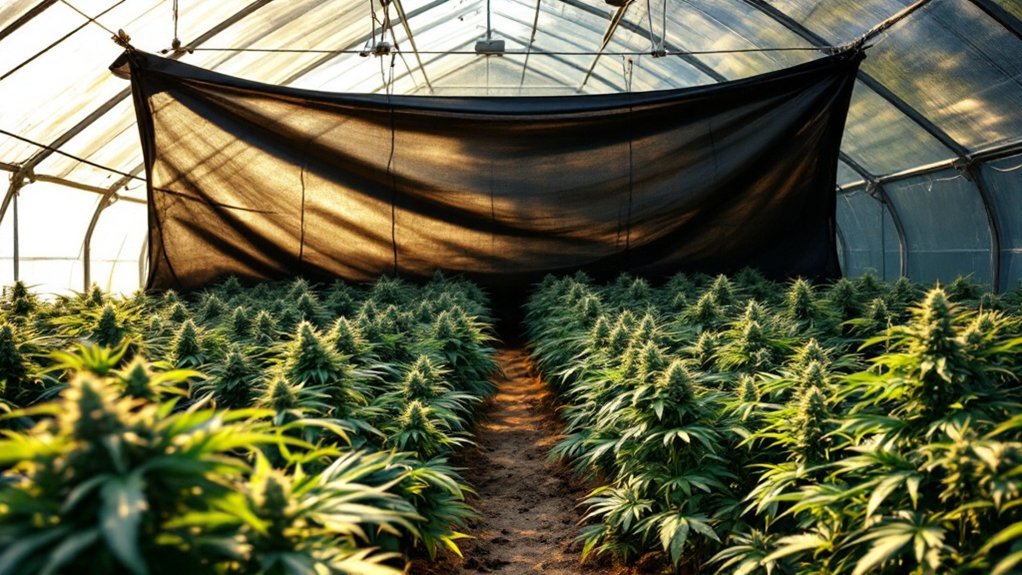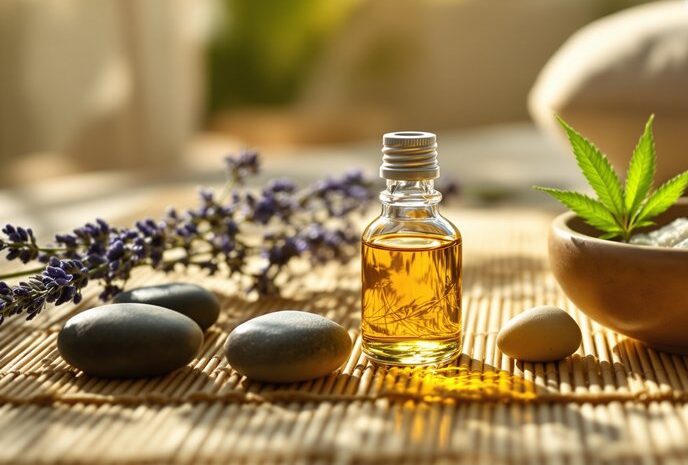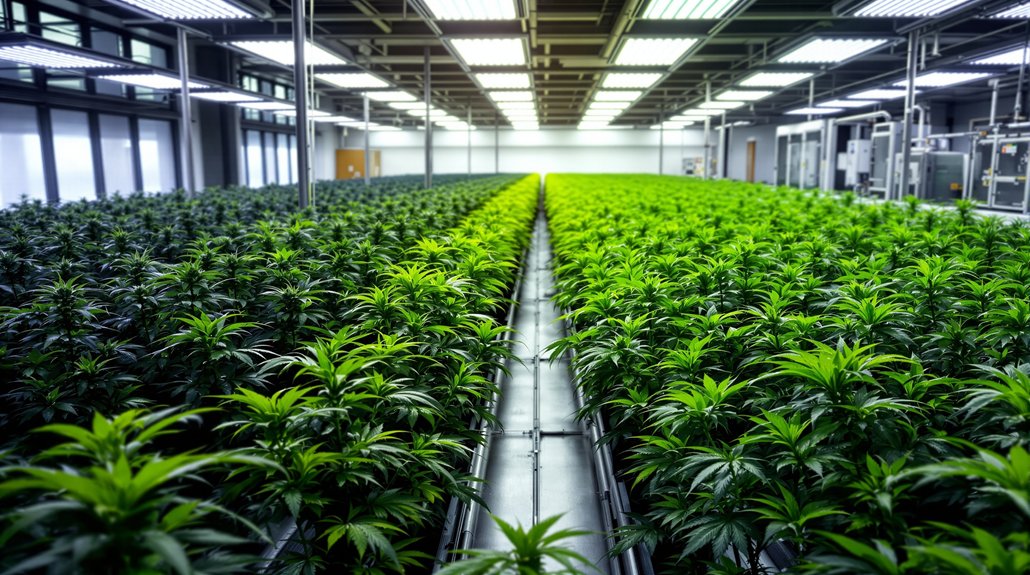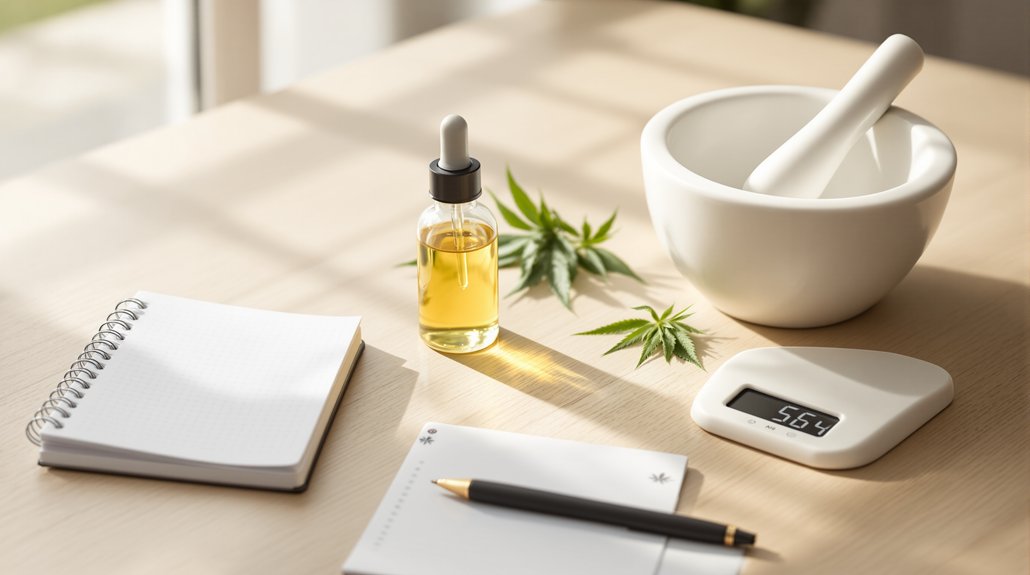Cannabis trichomes are tiny, mushroom-like structures covering marijuana plants. These microscopic resin factories produce cannabinoids like THC and CBD, plus aromatic terpenes responsible for unique flavors and effects. They’re not just pretty crystals. Trichomes serve as the plant’s defense system repelling predators, blocking UV rays, and regulating moisture. For growers, their color progression from clear to amber signals harvest time. These glistening factories hold the keys to cannabis potency.
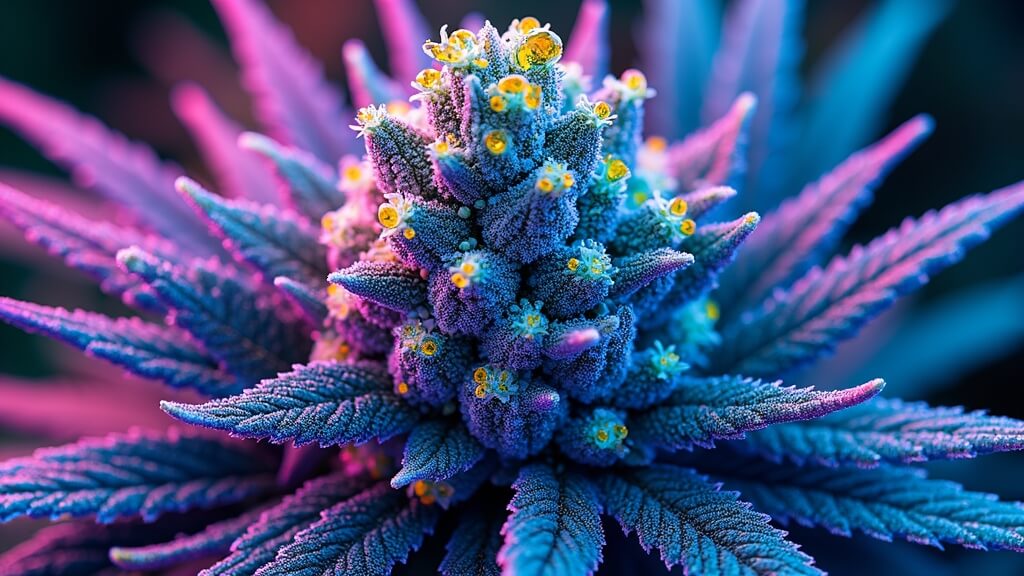
Tiny powerhouses. That’s what cannabis trichomes are. These microscopic, mushroom-like structures coating the cannabis plant aren’t just pretty crystals, they’re biological factories pumping out compounds that shape the entire cannabis experience.
Look closely at any quality bud. See that frosty coating? All trichomes.
These small filament-like growths appear all over the plant but concentrate heavily on flowers. Under magnification, they reveal themselves as tiny stalks with round, glandular heads. They’re not all created equal, though. Bulbous trichomes, the smallest type, dot young leaves and stems like minuscule spheres. Capitate sessile trichomes have a stalkless mushroom structure. The real stars? Capitate – stalked trichomes are the largest, most resinous variety with prominent stalks and heads.
The cannabis flower’s frosty landscape reveals a hierarchy of trichomes, from tiny bulbous spheres to majestic capitate or stalked resin factories.
Nature didn’t create trichomes to get people high. They’re survival tools. The sticky resin deters hungry insects and animals. Smart design, really. They also shield the plant from harmful UV radiation and reduce water loss by creating a moisture-regulating barrier. Talk about multitasking.
Inside these tiny structures, magic happens. They manufacture cannabinoids like THCA and CBDA, plus aromatic terpenes and terpenoids. Each strain’s unique effects? Thank the trichomes.
For growers, trichomes are nature’s harvest calendar. Clear trichomes? Too early. Cloudy or milky? Getting close. Amber? Different effects developing. This color progression signals cannabinoid development and degradation, helping cultivators pinpoint prime harvest times.
Trichomes aren’t unique to cannabis, they appear on various plants, algae, and fungi. But cannabis enthusiasts revere them for good reason. These minuscule structures determine potency, flavor, aroma, and effects. Without them, cannabis would be just another green plant.
The interaction between trichome-produced compounds and the endocannabinoid system creates the diverse range of medicinal and recreational effects cannabis is known for.
The rich terpene content within trichomes contributes to the entourage effect, enhancing or modifying how cannabinoids like THC and CBD interact with our bodies.
Next time you examine a cannabis flower, remember: those tiny crystal formations aren’t just pretty features. They’re sophisticated chemical factories, evolutionary defense mechanisms, and quality indicators all wrapped into microscopic packages. The word “trichome” itself comes from the Greek word “trikhōma,” meaning “hair covering” – an apt description for these tiny but crucial plant appendages.
Small but mighty. That’s trichomes for you.
Frequently Asked Questions
Can You Smoke or Consume Trichomes Directly?
Trichomes can be consumed directly. Most cannabis enthusiasts do. Smoking or vaporizing these resin glands delivers an intense experience – they’re cannabinoid factories, after all.
Raw consumption? Practically useless. The THCA hasn’t converted to psychoactive THC yet. Heat is essential.
Trichome concentrates like kief and hash pack a serious punch, sometimes exceeding 60% THC.
Do Different Cannabis Strains Produce Different Types of Trichomes?
No, all cannabis strains produce the same three types of trichomes: bulbous, capitate-sessile, and capitate-stalked.
Pretty democratic, really. The differences between strains? It’s all about what’s inside those little resin factories, not their structure.
Indica, sativa, hybrid – doesn’t matter. They all sport identical trichome types. The real variation comes from cannabinoid and terpene concentrations within these universal structures.
Same architecture, different chemical tenants.
How Do Environmental Factors Affect Trichome Development?
Environmental factors make or break trichome development. Temperature, humidity, light intensity – they’re all critical players.
Too hot? Trichomes suffer. Not enough light? Good luck getting decent resin production.
Nutrient availability directly impacts trichome quality. Fascinating fact: stress actually triggers more trichome production.
Plants think they’re under attack, so they beef up their defenses. Mother Nature’s weird like that.
Position matters too. Upper regions get better light, producing superior trichomes.
Can Trichomes Be Preserved During Processing and Storage?
Yes, trichomes can be preserved during processing and storage. Gentle handling is key. Flash-freezing at -4°F (-20°C) works wonders. Rough trimming? Kiss those trichomes goodbye.
Storage requires airtight, opaque containers to prevent oxidation. Light and heat are the enemy. Manual trimming beats machines for preserving potency.
Low humidity during drying keeps trichomes intact, not brittle. Rapid processing after harvest? Smart move. Less time for degradation.
Are Trichomes Visible to the Naked Eye?
Most cannabis trichomes are indeed visible to the naked eye.
The larger capitate-stalked and capitate-sessile varieties create that frosty, crystal-like coating cannabis enthusiasts obsess over.
Tiny bulbous trichomes? Not so much. Measuring just 15-30 microns, they’re practically microscopic.
Visibility depends on trichome concentration and lighting conditions.
When developed, they appear as tiny glistening dots on the plant surface.
Think morning dew, but way more valuable.
